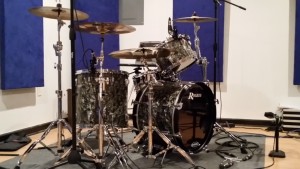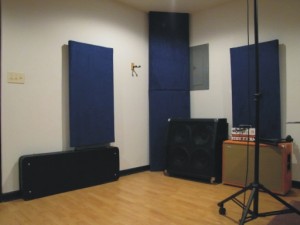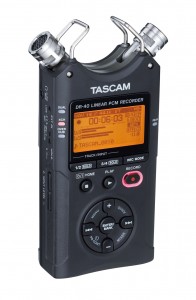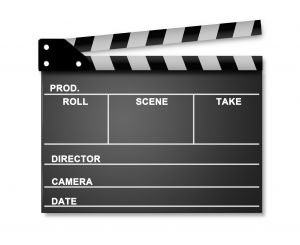
April 28, 2020
|
Posted by Jon (admin)

I’ve recently started jamming with some guys around the studio once in a while just for fun, but I ran into a slight problem: I need to keep my drum mics connected to my mic preamps so they’re always ready for recording drum tracks. However, I also needed to connect my drum mics to my live mixer (a Behringer X-Air XR18) so I can use my in ear monitors and add drums to the mix when jamming. So to put it simply, I needed a way to split the signals from my drum mics and send them to a couple of different sets of inputs. (more…)
 Categories: Live Sound, Recording, Reviews, Tips for Artists & Bands, Tips for Engineers
|
Categories: Live Sound, Recording, Reviews, Tips for Artists & Bands, Tips for Engineers
|  Tags: behringer, Drums, mic, microphone, mike, ms8000, Recording, Review, splitter
Tags: behringer, Drums, mic, microphone, mike, ms8000, Recording, Review, splitter

July 25, 2017
|
Posted by Jon (admin)

An all-important detail that isn’t mentioned in many articles about recording acoustic drums is how important it is to find the “sweet spot” in your room where the drums sound their best. I found this out the hard way. Since building my studio several years back, I’ve always set up the drums roughly centered along one of the longer walls (my room is 24′ x 22′), with the drummer’s back to the wall. This just seemed to be the logical place to set them up. It allowed me plenty of room to work around the kit when setting up the mics, allowed good visual communication between the drummer and the other band members, and it kept the kit somewhat out of the way for when people walk through the live room to the control room (which is on the opposite end of the building from the front door). It also allowed my own band plenty of room to set up a guitar amp on one side of the kit and a bass amp on the other for rehearsals, since that’s how things would normally be set up on stage during a live performance. (more…)
 Categories: Bands, Drums, Recording, Tips for Artists & Bands, Tips for Engineers
|
Categories: Bands, Drums, Recording, Tips for Artists & Bands, Tips for Engineers
|  Tags: Drums, Recording, sweet spot
Tags: Drums, Recording, sweet spot

April 8, 2016
|
Posted by Jon (admin)

A while back, I received an e-mail from a friend asking me about acoustic treatment options for a practice room that he is setting up in the basement of his home. He plays the drums and guitar, and he said that the reflections in the room were terrible. Knowing that I had spent a lot of time and money on treating my studio, he was curious about what I had used, and what I would recommend that he do for his room. (more…)
 Categories: Recording, Tips for Artists & Bands, Tips for Engineers
|
Categories: Recording, Tips for Artists & Bands, Tips for Engineers
|  Tags: acoustic, band, fiberglass, foam, panels, Recording, rehearsal, space, studio, treatment
Tags: acoustic, band, fiberglass, foam, panels, Recording, rehearsal, space, studio, treatment

April 5, 2016
|
Posted by Jon (admin)
One of the most challenging aspects of building a recording studio is knowing what equipment to buy and when. Where do you start? What should you sink most of your money into early on? The sky is the limit when it comes to how much money you can spend, so it can be very difficult to know what to buy first–should you buy a great mic and a mediocre preamp, or a great preamp and a mediocre mic? What about converters? Should you invest more in high-quality converters early on, or save that investment for later? (more…)
 Categories: Recording, Tips for Artists & Bands, Tips for Engineers
|
Categories: Recording, Tips for Artists & Bands, Tips for Engineers
|  Tags: budget, buying, decisions, gear, Recording, strategy, studio
Tags: budget, buying, decisions, gear, Recording, strategy, studio

February 11, 2016
|
Posted by Jon (admin)

I’ve been using a Tascam DR-40 portable recorder for over a year now to record our band reharsals and services each week at church. After each rehearsal, I import the recorded audio into my DAW, export each song as an MP3, and e-mail those MP3’s to the other members of the band so we can evaluate our parts, practice them, and listen to the songs to help commit any new ones to memory. I’ll often do the same thing after our services, just so we can listen back and hear how everything sounded out front during the service. I also want to begin posting the pastor’s sermon each week on the church website, but recording the sermon with the DR-40 has brought some challenges (more on that in just a moment). (more…)
 Categories: Live Sound, Recording, Tips for Engineers
|
Categories: Live Sound, Recording, Tips for Engineers
|  Tags: audio, church, DR-40, DR40, H4N, Recording, sermons, services, Tascam, Zoom
Tags: audio, church, DR-40, DR40, H4N, Recording, sermons, services, Tascam, Zoom

May 9, 2012
|
Posted by Jon (admin)
 For several years, I’ve had some Sennheiser e604’s that I’ve always used for recording the toms on drum kits. Lately though, I had been particularly unimpressed with how my tom tracks have sounded, so I decided to try out a pair of the much-loved-for-toms, CAD M179’s. I only bought two M179’s and set one mic between my two high toms (10″ & 12″) and the other between my two floor toms (14″ & 16″). I engaged the -20 db pad on the M179’s and set the pattern to hypercardioid to try and minimize bleed. (more…)
For several years, I’ve had some Sennheiser e604’s that I’ve always used for recording the toms on drum kits. Lately though, I had been particularly unimpressed with how my tom tracks have sounded, so I decided to try out a pair of the much-loved-for-toms, CAD M179’s. I only bought two M179’s and set one mic between my two high toms (10″ & 12″) and the other between my two floor toms (14″ & 16″). I engaged the -20 db pad on the M179’s and set the pattern to hypercardioid to try and minimize bleed. (more…)
 Categories: Drums, Recording, Reviews, Tips for Engineers
|
Categories: Drums, Recording, Reviews, Tips for Engineers
|  Tags: CAD M179, Drums, Recording, Sennheiser e604, tom mics, toms
Tags: CAD M179, Drums, Recording, Sennheiser e604, tom mics, toms

March 19, 2012
|
Posted by Jon (admin)

A few weeks ago, I was watching the movie Kung Fu Panda with my son. In the film, Po (the Kung Fu Panda), finally learns the secret of both Kung Fu, and of his adoptive father’s noodle soup: there is no secret ingredient. If you’ve seen the movie, you know what I’m talking about. A few days later, I started considering how this same revelation applies to the world of recording. (more…)
 Categories: Recording, Tips for Engineers
|
Categories: Recording, Tips for Engineers
|  Tags: Recording, secrets, tips
Tags: Recording, secrets, tips

November 1, 2011
|
Posted by Jon (admin)
![adat[1]](http://silentsky.net/wordpress/wp-content/uploads/2011/11/adat1.gif)
If you’re confused by the multitude of common digital audio connections available today on many recording interfaces, such as ADAT, S/PDIF, AES/EBU, S/MUX, Word Clock, etc., you owe it to yourself to read this excellent article from Presonus:
Digital Audio Connections and Synchronization

 Categories: Recording, Tips for Engineers
|
Categories: Recording, Tips for Engineers
|  Tags: adat, audio, connections, digital, Recording, spdif
Tags: adat, audio, connections, digital, Recording, spdif

August 8, 2011
|
Posted by Jon (admin)

When working in the studio, some producers/engineers prefer to record each instrument completely separate from each other. First, they’ll record the drums, then the bass guitar, then the rhythm guitar, then the keyboards, etc. It’s almost like building a brick wall, with each instrument representing a single layer of bricks. (more…)
 Categories: Recording, Tips for Artists & Bands, Tips for Engineers
|
Categories: Recording, Tips for Artists & Bands, Tips for Engineers
|  Tags: bands, Recording, separate, studio, together
Tags: bands, Recording, separate, studio, together

June 23, 2011
|
Posted by Jon (admin)

Between November 2010 and March 2011, I had the opportunity to do something I had never done before–record the audio for a short film. Some friends of mine who have a video production company here in Northeast Arkansas (Anthem Pictures), were producing it, and recruited me to handle the audio. (more…)
 Categories: Recording, Tips for Engineers
|
Categories: Recording, Tips for Engineers
|  Tags: audio, film, independent, indie, movies, Recording
Tags: audio, film, independent, indie, movies, Recording
 April 28, 2020
|
Posted by Jon (admin)
April 28, 2020
|
Posted by Jon (admin)
 Categories:
Categories:  Tags:
Tags: 


 For several years, I’ve had some
For several years, I’ve had some 
![adat[1]](http://silentsky.net/wordpress/wp-content/uploads/2011/11/adat1.gif)



